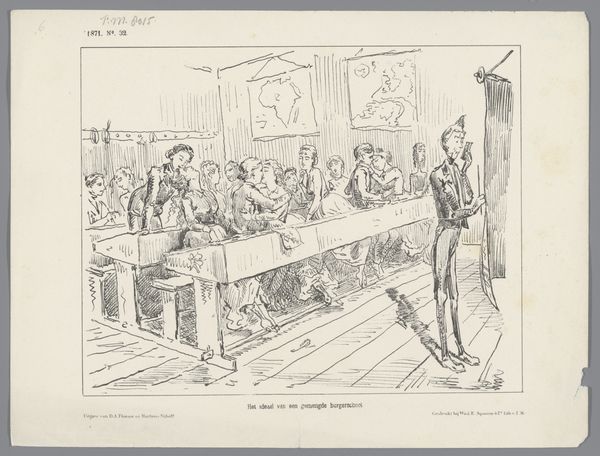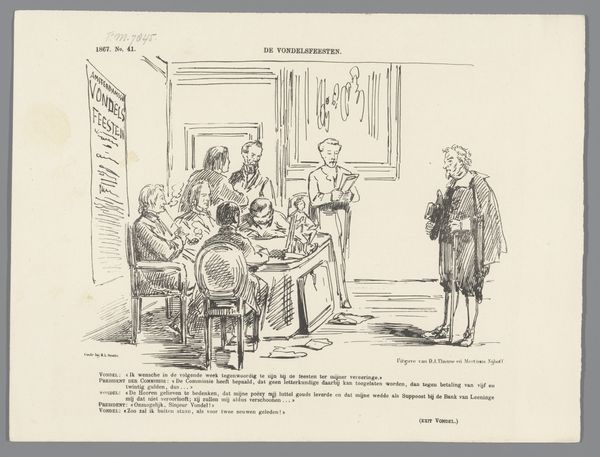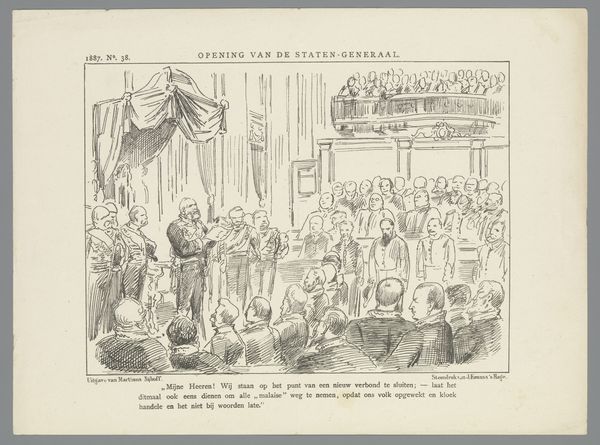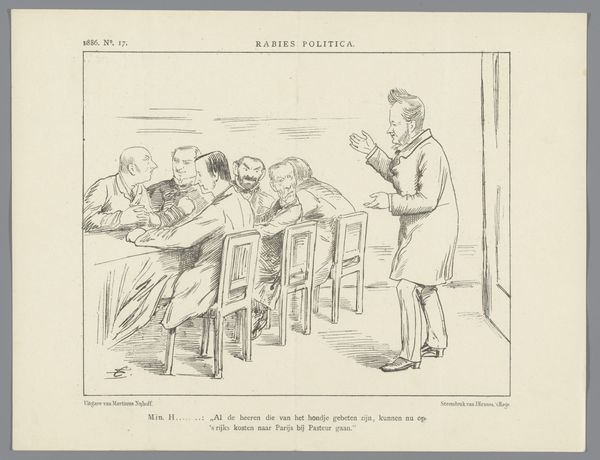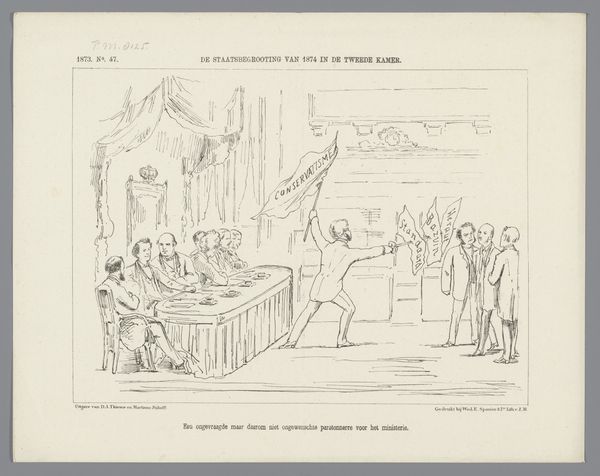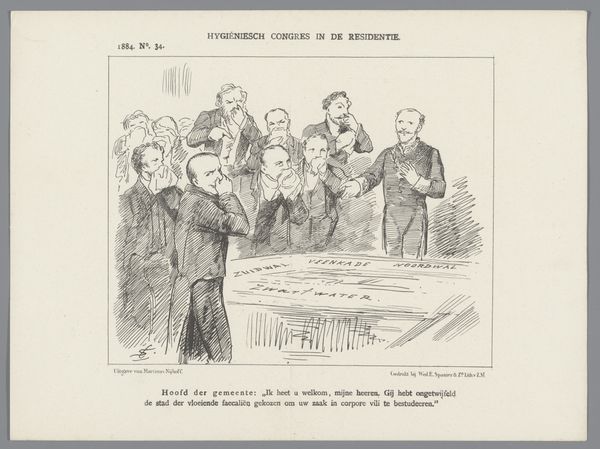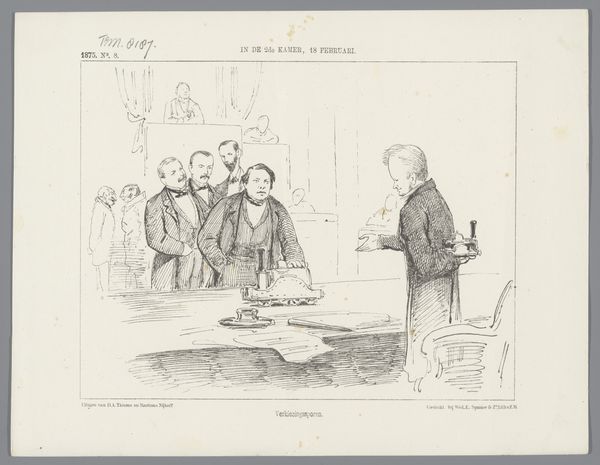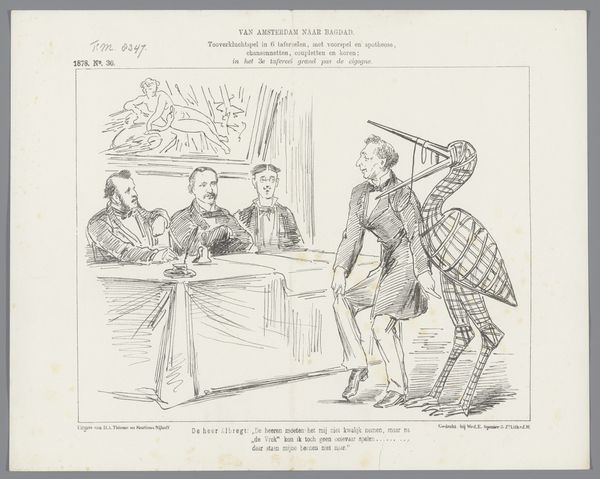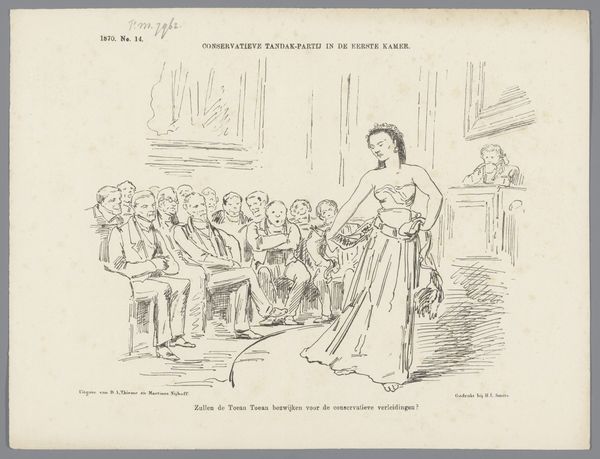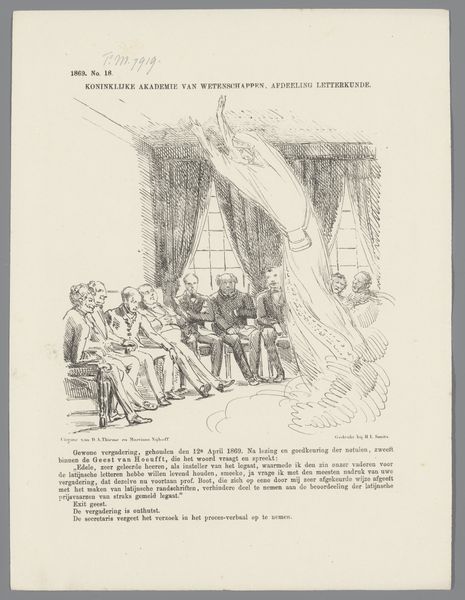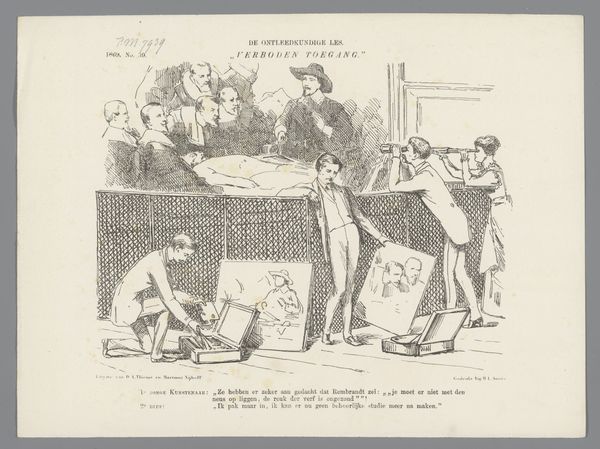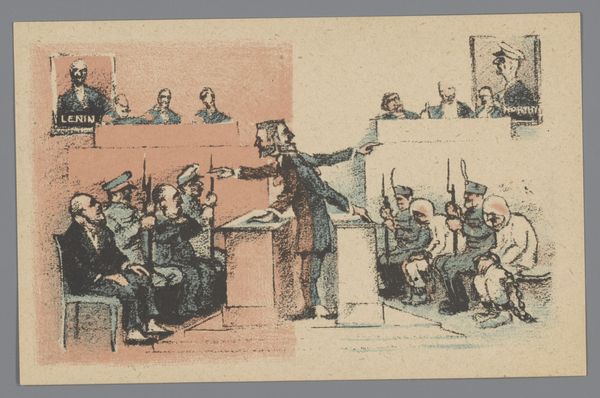
Spotprent op kandidatuur van D. Koorders voor de Tweede Kamer, 1869 1869
0:00
0:00
Dimensions: height 215 mm, width 275 mm
Copyright: Rijks Museum: Open Domain
Curator: Let's discuss this political cartoon, "Spotprent op kandidatuur van D. Koorders voor de Tweede Kamer, 1869." Made in 1869, this print shows a very dynamic scene with many figures crammed together, the main one is raising a hand toward heaven, looking self-righteous. It is a very busy, opinionated artwork. How would you read it? Editor: Well, given its title, I imagine it reflects public sentiment around the election of D. Koorders. But I'm curious, what kind of political conversations were happening at that time in the Netherlands, and how did this artwork play a role? Curator: Precisely. The artwork is commenting on the dynamics of the time. The Dutch parliament and society grappled with debates on colonialism, education, and freedom of the press, especially concerning the Dutch East Indies, now Indonesia. This caricature isn't just about Koorders, but it critiques the socio-political positions of those who opposed progressive education and press freedom in the colonies. The central figure, the elevated person is Laurens Coster, who made Haarlem the book-printing city. Is that elevation maybe ironic? Editor: I see, so this caricature uses Coster as a symbol to attack politicians, the very antithesis to the ideals of a 'free press'. Does the density of the composition mean to emphasize societal turmoil around this figure, Koorders? Curator: Yes, absolutely. The chaos emphasizes public and political dissent, while using a founding father, like Coster, elevates the message of freedom and learning while casting his opponents, figuratively, into the shadow of ignorance. And those on the table may be caricatures too. Note the caption as well. It's multilayered criticism designed for public consumption. Editor: This political print is not only visually engaging, but really functions as a record and instigator in cultural discourse. It really sheds light on using art for social commentary. Curator: Exactly. Examining it reveals the intertwined roles of art, politics, and public sentiment in shaping historical narratives. A simple caricature it is not!
Comments
No comments
Be the first to comment and join the conversation on the ultimate creative platform.
